New linear GaN amplifiers are powerful and efficient
Introduction
The transformation of solid-state amplifiers for satellite communication systems from use of Gallium Arsenide (GaAs) transistors to Gallium Nitride (GaN) transistors has occurred at an astonishing rate. Not long ago nearly all comms SSPAs were built using GaAs technology, and now it would be hard to find a recently developed satcom SSPA that was not built using GaN. So why is GaN the unequivocal technology of choice?
Benefits
- High Linearity
- High Power
- High Efficiency
- High Reliability
- Small Package
- Light Weight
Why GaN?
For many years, the standard technology for satcom solid-state power amplifiers was GaAs devices which provided the highest power available with good linearity performance. By ~2010, after two decades of growth, the total power achievable from GaAs devices had largely plateaued. The low GaAs breakdown voltage meant operating voltages were in the 5-15V range, and its relatively low thermal conductivity meant operating current needed to be limited. These factors combined to create a ceiling for total device output power density in the ~1W/mm2 range.
Enter Gallium Nitride, an alternative semiconductor technology initially developed for light emitting diodes (LEDs) but then adapted for communications applications because of its many advantages. The breakdown voltage for GaN, is more than 100V, making much higher operating voltages possible, as well as higher current densities due to its significantly higher thermal conductivity (~10X). These combine to enable 6-8x higher output power density with GaN than with GaAs (Figure 1).
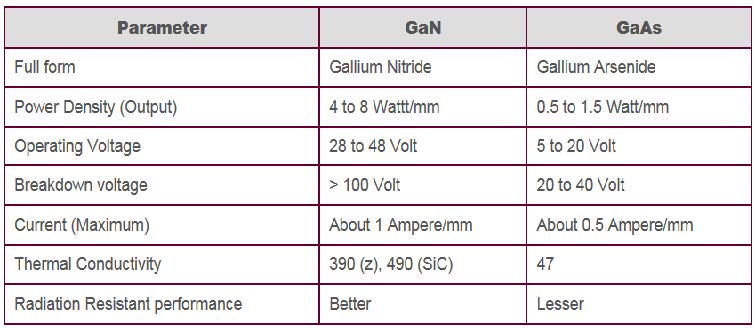
Several other GaN parameters also aid designers in developing more capable amplifiers. The 230ºC maximum operating junction temperature for GaN is 80ºC higher than that of GaAs, enabling development of larger chips that combine multiple transistor outputs with standard thermal design methods. GaN has a relatively high impedance, allowing better matching to meet gain and phase variation requirements over wider bandwidths. GaN’s inherently better radiation resistance also makes it the choice of technology for space SSPAs.
As GaN processes have developed and matured, higher output power, greater reliability, and lower cost have made it an even clearer choice. Process revisions now have high power devices available for frequencies up through Q/V-band.
Linearity & GaN
One major difference between GaAs and GaN is the device behavior as it approaches saturation. The GaAs devices are considered relatively low distortion (low noise) and have consistent power saturation curves across devices and processes, resulting in the ability to use a rule-of-thumb that typical linearity requirements for satcom systems will be met at about 3dB below saturation. As a result, link designers and RF engineers often felt comfortable specifying the Psat or P1dB
for an SSPA needed in a link, putting 3dB into the link budget for backoff, and calling it a day. Figure 2 shows a power saturation curve and identifies the linear operating point (Plinear), the 1dB saturation point (P1dB) and saturated power (Psat).
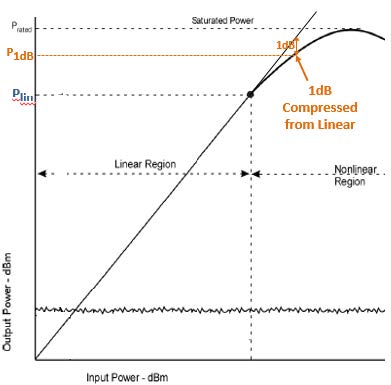
With GaN devices, there is more variation in saturation curves (Pout vs Pin) across devices and processes, with the knee of the GaN saturation curve softer than with GaAs. Likewise, the power level at which the device will meet specific linearity requirements, such as spectral regrowth for single-carrier systems or intermodulation products for multi-carrier systems, varies significantly. In some cases, the saturation will be soft enough that the linear operating point (power at which it meets linearity requirements) falls above the 1dB compression point, which never happens with GaAs.
GaN devices can operate fairly close to saturated power and meet linearity requirements. In addition, GaN devices can be linearized with predistortion linearizers to improve the linear power by as much as 2-3dB. Because of the variation across processes, it is important for RF and system designers to specify the amplifier for the conditions it will be operated. This includes specifying the needed operating power and the linearity requirements that apply during operations.
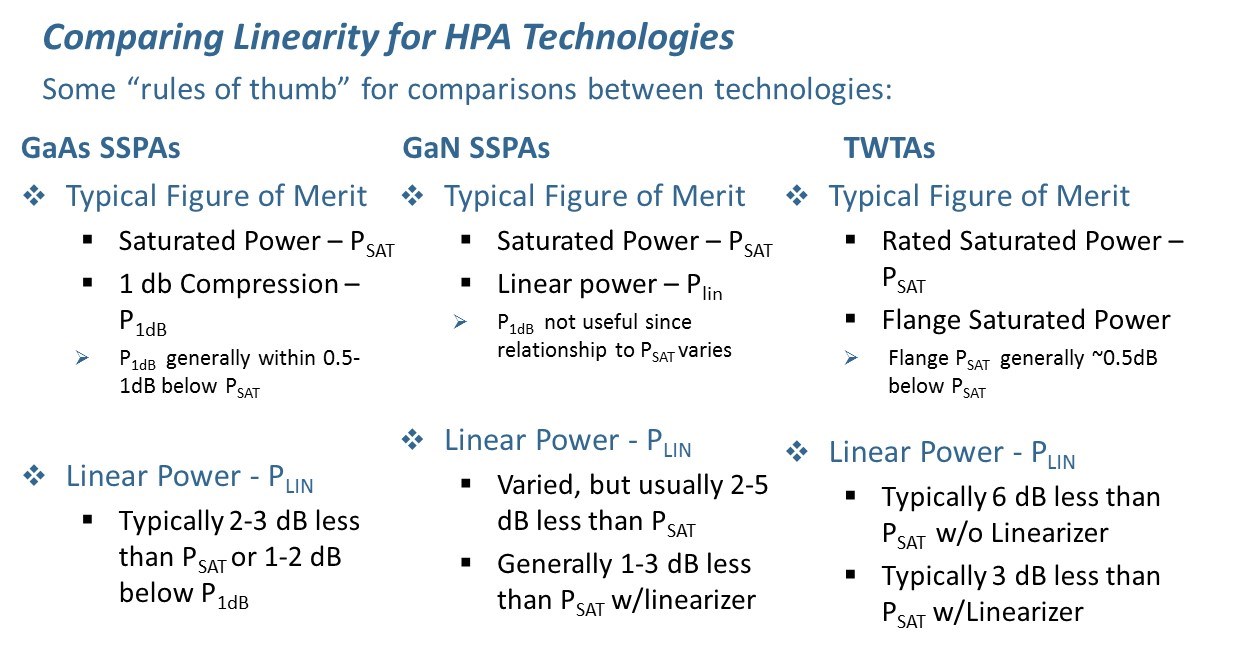
The Bottom Line on GaN
With all the advantages identified, powerful linear amplifiers can be built with GaN devices that offer more linear power than GaAs amplifiers in the same size, weight, and power draw (SWaP). Lower power draw means smaller power supplies and smaller, lighter cooling systems, reducing the SSPA unit’s size and weight. This advantage is shown in Figure 4, which shows SWaP for a “100W” GaAs SSPA that yields 50W of linear output power compared with a 50W linear output power GaN SSPA. For the same linear output power, the prime power draw is reduced by more than half, and weight and volume are reduced by more than three-fourths.

New Industry-Leading GaN Products
Over the last 5 years, Comtech Xicom has developed a GaN-based SSPA product line that offers industry-leading SWaP and efficiency for demanding applications and tough environments. New products based on our building block approach cross power levels and frequency bands, with additional products planned for release throughout the year. From 10 to 200 linear watts and from X-band to Ka-band, these products have easily interchangeable packages across frequency bands and provide features such as power saving modes, Ethernet interfaces with SNMP V1/V2/V3, and built-in redundancy control.
20W Linear GaN X-band BUC
Comtech Xicom’s new XTSLIN-20X-B1 block upconverter (BUC) packs a tremendous amount of power into a 5.3 lb box – more than ever seen at X-band. This compact, highly capable unit offers 20W of MIL-STD-188-164 linear power in a 5.8” x 5.1” x 3.9” box that can be easily feed mounted. The BUC is designed to handle tough environments and meet the stringent X-band RF requirements, while drawing very little power for extended battery operation as needed.
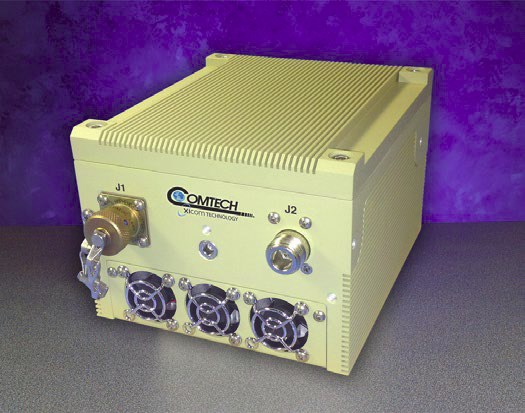
This unit accepts a 950-1450 MHz L-band input, upconverts it to 7.9 – 8.4 GHz X-band, and uses proprietary Xicom GaN gain and power stages to amplify the signal to achieve full output power. Features include temperature compensation, gain control, harmonic filtering, tight gain variation and stability, a serial RS-232 digital monitor and control interface, and options for operating with 24 VDC or 48 VDC prime power, provided over the IF line or through a separate connector. It also has ethernet interface supporting SNMPv1/v2/v3.
The XTSLIN-20X-B1 provides around 50W saturated output power (Fig. 6), 32W linear power using MIL-STD-188-164 definition at midband at ambient temperature (Fig. 7), and over 20W linear power over its 500 MHz frequency band (7.9 – 8.4 GHz) and 100⁰C operating temp range (-40⁰C to +60⁰C). This high linear output power level is achieved with less than 120W prime power consumption over all conditions, in a 5.3 lb self-cooled feed-mount outdoor package that can handle the toughest environments. The GaN amplifier provides excellent broadband performance with <2dB of peak-to-peak gain variation over the band (Fig. 8).
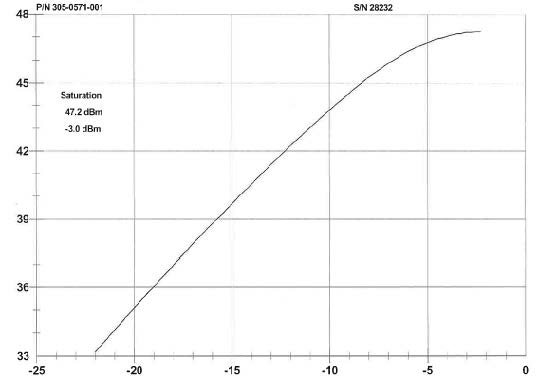
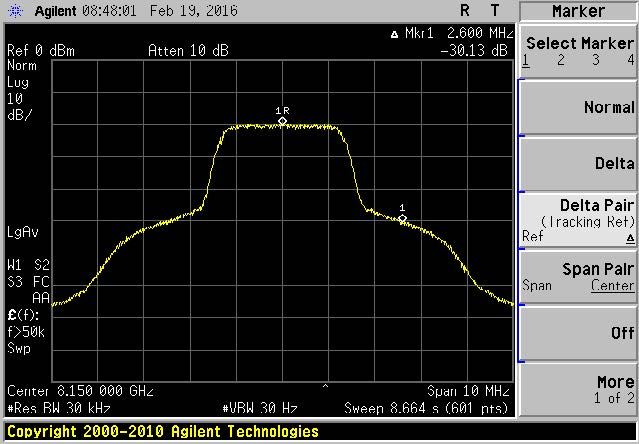
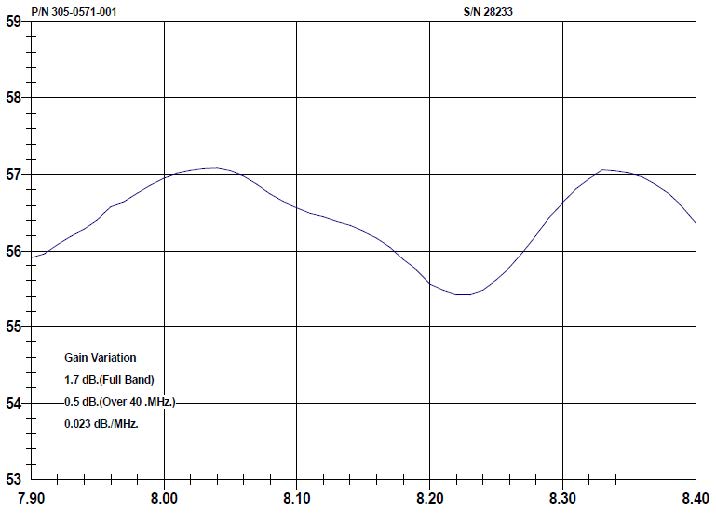
One of the critical features with such a compact unit is the efficiency. This GaN BUC operates as a Class AB amplifier with power draw ranging from 108W at 20W linear RF power output down to 60W at 2W output power level (Figure 9a). Optional proprietary features offer even greater efficiency with output power blanking for TDMA burst systems (with control line from modem) and Battery Saver Mode to further reduce power draw up to 25% when conditions allow (as controlled with direct input), thus extending battery life (Figure 9b).
(a) Power Draw with No Battery Save Mode
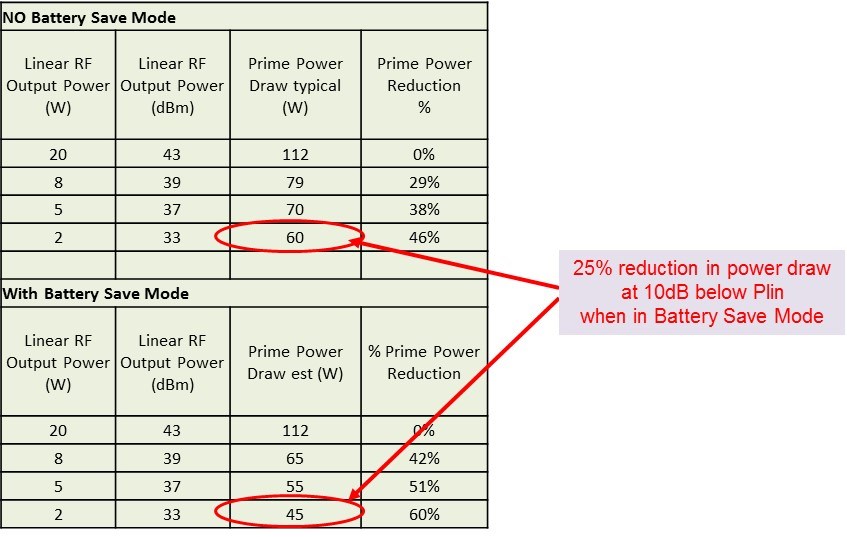
(b) Power Draw with Battery Save Mode
Figure 9. XTSLIN-20X-B1 Prime Power without & with Battery Save Mode
With this new BUC capability, integrators will be able to offer their customers the highest X-band data rates possible in the smallest packages. With increasing use of both commercial and military X-band systems, significantly more users are taking advantage of more available X-band capacity. This new BUC enables integrators to offer highly compact transportable and manportable satcom terminals that take advantage of Skynet, Xstar and WGS to provide much higher data rates and more efficient operation.
200W Linear GaN Ku-band BUC
Comtech Xicom’s new XTSLIN-200K SSPA (with optional L-band BUC) offers a lot of power in a 48 lb box. This rugged and efficient unit provides 200 watts of linear power over the Ku satcom frequency bands in a 19” x 14” x 8” box that supports a range of redundancy configurations. This amplifier draws only 1600W at linear output power and is designed to handle tough environments, operating from -40⁰C to +60⁰C.
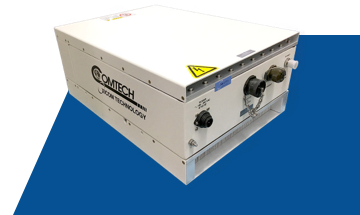
When configured with optional BUC, this unit accepts a 950-1700 MHz L-band input, upconverts it to 13.75 – 14.50 GHz Ku-band, and uses proprietary Xicom GaN gain and power stages to amplify the signal to achieve full output power. Features include temperature compensation, gain control, harmonic filtering, tight gain variation and stability, and 50/60Hz 220V AC prime power. It also has ethernet interface supporting SNMPv1/v2/v3 or serial RS-232 digital monitor and control interface.
200W Linear GaN X-band SSPA
Comtech Xicom’s XTSLIN-200X SSPA (with optional L-band BUC) provides industry-leading power in a 53 lb. box. This rugged and efficient unit provides 200 watts of MIL-STD-188-
164 linear power over the X-band frequency band in a 19” x 14” x 8.6” box that supports a range of redundancy configurations. The BUC is designed to handle tough environments and meet the stringent X-band RF requirements. This amplifier draws only 1150W at linear output power and is designed to handle tough environments, operating from -40⁰C to +60⁰C.
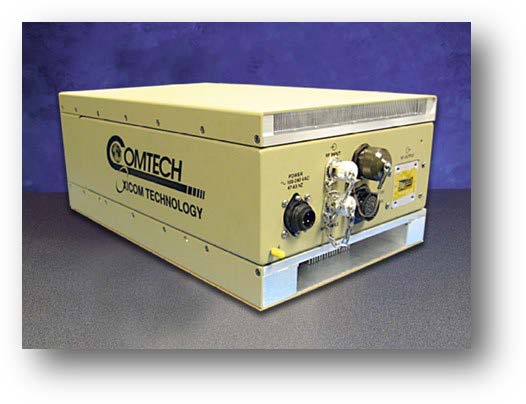
When configured with optional BUC, this unit accepts a 950-1450 MHz L-band input, upconverts it to 7.9 – 8.4 GHz X-band, and is designed for very low leakage to support multi-carrier operation with low PIM antennas. Features include temperature compensation, gain control, harmonic filtering, tight gain variation and stability, and 50/60Hz 220V AC prime power. It also has ethernet interface supporting SNMPv1/v2/v3 or serial RS-232 digital monitor and control interface.
These are just the latest in Comtech Xicom’s GaN solid-state power amplifier product lineup, and we are open to customizing or designing to unique requirements. In addition to the SSPAs themselves, Comtech Xicom has also developed redundancy and combining systems to provide enhanced capability for customers needing more power, higher availability, soft-fail operation or specialized implementations.
